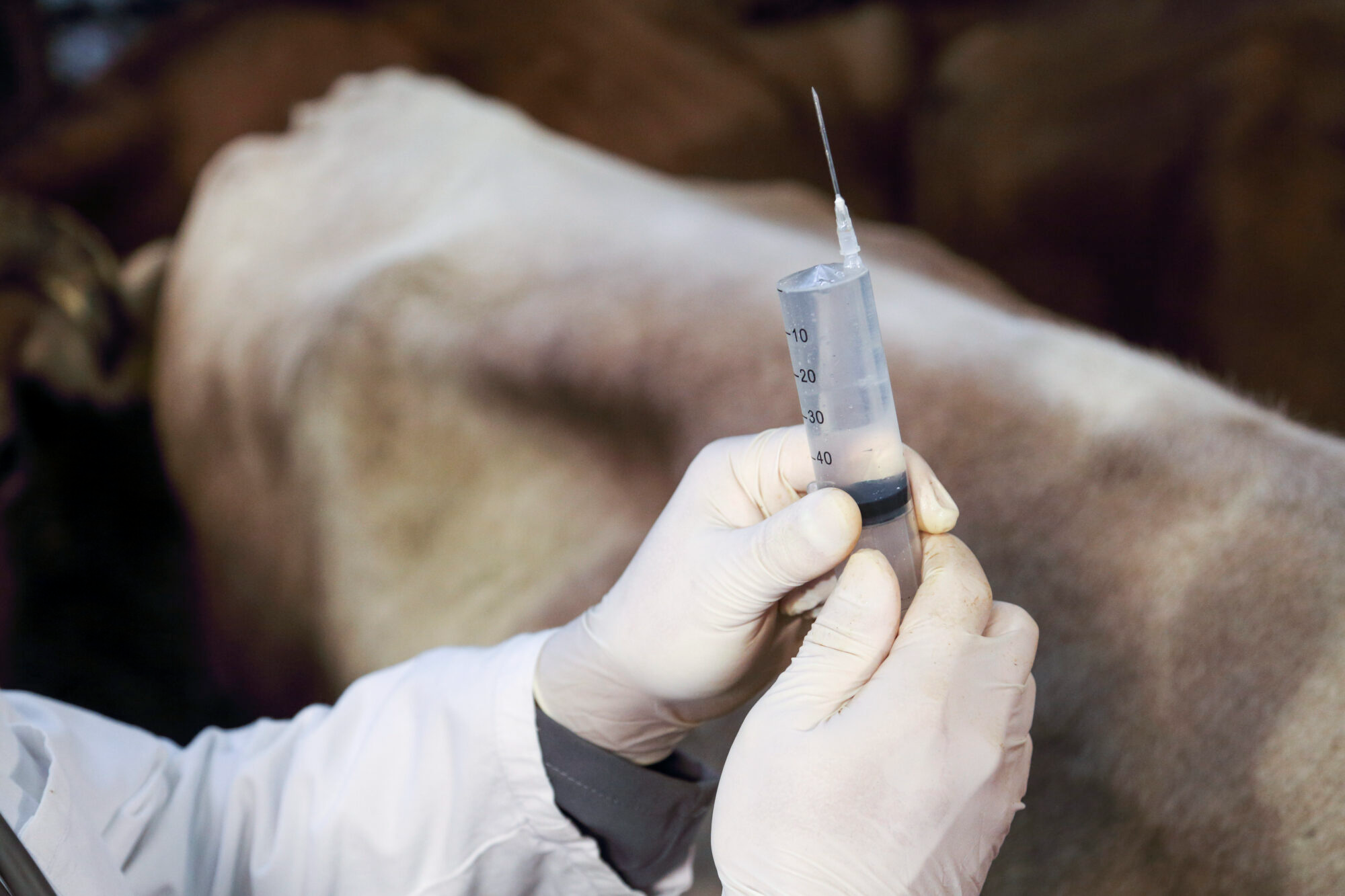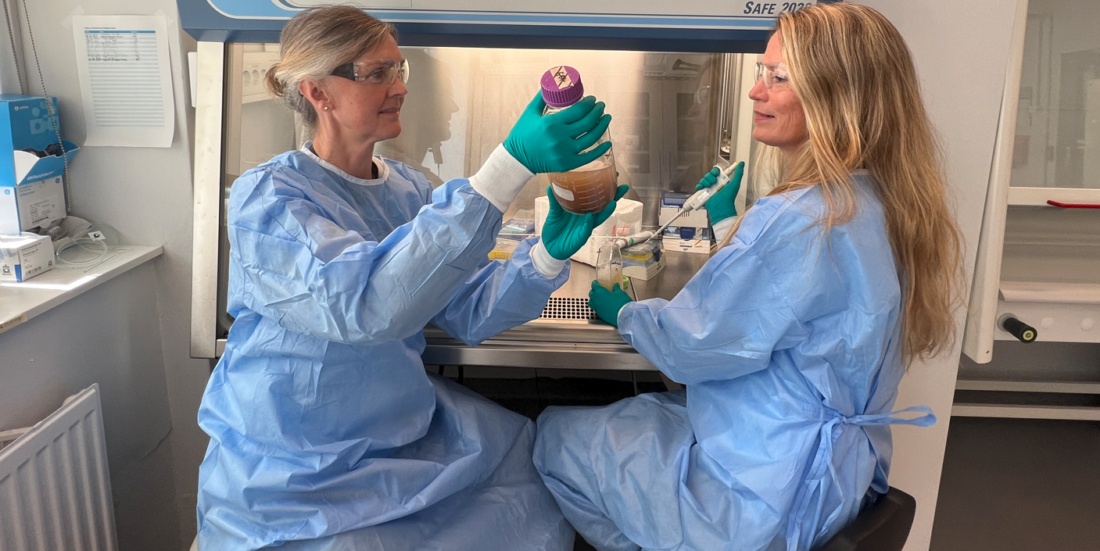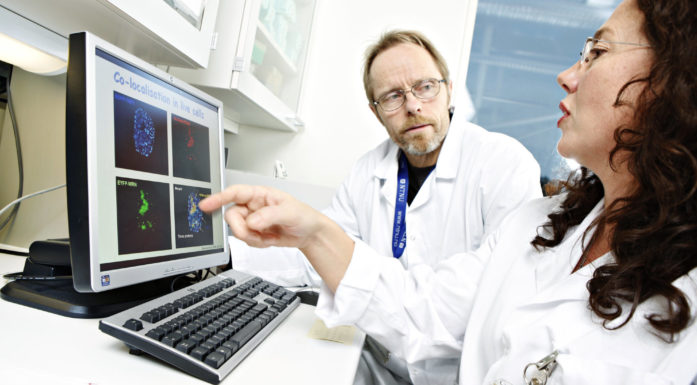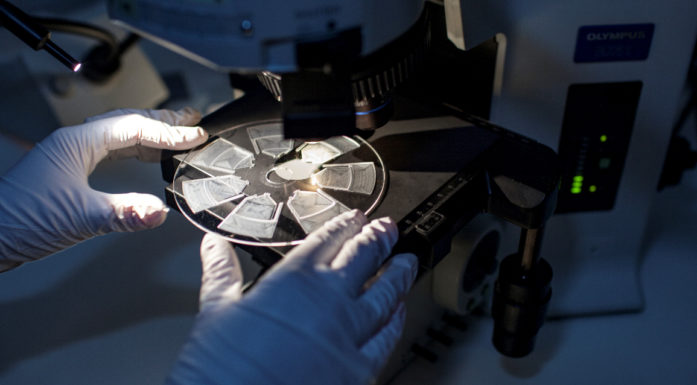Can disinfectants promote antibiotic resistance?
Yes, say researchers – who suspect that disinfectants used in food production may in fact be exacerbating a global public health problem.
According to figures published by the journal Nature, seventy-three percent of the world’s antibiotics are used in the production of domestic animals. They are used primarily for preventive purposes because these animals are kept in confined and unhygienic conditions, but are also administered to promote growth.
The result is that bacteria are becoming increasingly resistant to essential and life-saving antibiotics.
So says Gunhild Hageskal, who is a Senior Research Scientist at SINTEF. Together with her colleagues, including Anne Tøndervik, she is currently working in the field of antibiotic resistance, which is currently regarded as one of the biggest threats to global public health.
“We know that resistant microbes can be transmitted from animals to humans via our food and the environment”, says Hageskal. “This interaction is recognised as part of a ‘One Health perspective”, acknowledging that all things are interconnected and that the battle to combat resistance must be fought at all levels”, she says.
A reduction in the use of antibiotics alone is no longer sufficient to combat the global increase in resistant microbes. According to the prestigious journal The Lancet, preventive approaches must be introduced in order to inhibit transmission, with a particular focus on the livestock sector.
We know that resistant microbes can be transmitted from animals to humans via our food and the environment.
And the problem is getting worse. Global prognoses for 2050 indicate that ten million people will die each year because bacteria are developing antibiotic resistance. In comparison, only seven million died in the course of three years as a result of the Covid-19 pandemic. (Source: Worldometers.info/coronavirus).
Click here to read more about antibiotic resistance (in Norwegian).
Norwegian food is safest
Together with Iceland, Norway can boast at being clearly among the best in the world when it comes to limiting its use of antibiotics in the livestock sector. It is prohibited in the Norwegian sector to use antibiotics to promote growth or prevent disease. However, you don’t have to look any further than Denmark to find that it is common practice for pigs and other animals to be administered with antibiotics in their feed. According to the researchers, the situation is worse by far in Asia and South America.
As consumers, we should bear this in mind when we buy Argentinian beef, Danish bacon or Spanish ham. Meat is of course incorporated into a variety of processed products, and even if the label says that the country of origin is Norway, this doesn’t necessarily mean that the animal was reared in Norway.
Key facts: ‘Norwegian’ doesn’t always mean Norwegian
The current country of origin labelling scheme states that as long as a meat product is properly processed or manufactured in Norway, it can be labelled as ‘Norwegian’. However, the raw materials in such products may in fact have their origins in countries that operate with entirely different animal welfare standards than in Norway.
This can appear complicated and confusing to Norwegian consumers and offers them little help in making informed choices in the supermarket.
- Click here to read more about country of origin labelling (in Norwegian).
However, even if Norway’s problems are small compared to the rest of the world, we shouldn’t be complacent. The world is more globalised than ever, and resistant microbes (bacteria and fungi, Ed.) have no respect for national boundaries. We are currently already seeing an increase in infections that are difficult to treat in Norwegian hospitals.

Seventy-three percent of the world’s antibiotics are used in the production of domestic animals – mostly to prevent disease and promote growth. According to SINTEF, this has led to resistance issues that have to be combated using a variety of measures. Stock photo: iStock
According to SINTEF researchers, 1.3 million people died in 2019 because their treatment failed as the result of antibiotic resistance. An additional five million died due to associated problems.
Disinfection holds the key
We continue to find unwanted microbes in the Norwegian food production sector. This is why disinfection procedures are a very important part of the production process. The use of disinfection is crucial to disease prevention and the control of microbial threats in many fields, such as medicine, agriculture, aquaculture, food production, the drinking water and cleaning sectors, as well as personal hygiene.
“The problem is simply that the use of disinfectants can itself cause bacteria to develop resistance to antibiotics”, says Anne Tøndervik, who is also a Senior Research Scientist at SINTEF.
This issue is described as a gap in our knowledge as we engage in the battle against antibiotic resistance. When a bacterium is exposed to antibiotics it adopts a number of strategies to protect itself. In basic terms, these strategies are identical to those that it uses to protect itself against other chemicals such as disinfectants. Some bacteria are even resilient enough to ward off the very agents that are designed to destroy them. These can then reproduce, enabling their descendants to inherit their resistance. Resistance may also develop naturally as a result of genetic mutation.
“We have seen indications that disinfectants can promote resistance and possibly also so-called cross-resistance, which enables bacteria to resist the threats of both antibiotics and disinfectants”, says Hageskal. “It is well known that disinfectants that contain quaternary ammonium compounds (one of the three most common active substances used for disinfection) are able to promote antibiotic resistance”, she says.
When a bacterium is exposed to antibiotics it adopts a number of strategies to protect itself.
It is this problem that SINTEF is currently addressing as part of the project called DisinfectAMR. Together with its research partners at NTNU, SINTEF is looking into the effectiveness of agents used to disinfect poultry and salmon production lines, and whether these may have unwanted side effects in terms of contributing to antibiotic resistance.
In order to compare condition status in Norway with the situation overseas, researchers are working together with the University of Lasi in Romania, where scientists are taking samples from the premises of a local poultry producer. A PhD student is also participating in the project.
A major evaluation
To date, researchers have been focusing on what are known as slaughterhouse processing lines. These conceal many nooks and crannies that are difficult to keep clean, even when premises are washed down and disinfected on a daily basis.
“This is where biofilms are created. Biofilms form thin, slimy layers of microbes that in some cases can be difficult to spot with the naked eye”, says Tøndervik. “Biofilms are another piece in the puzzle. They represent the natural habitat of bacteria and are well-known for acting as the cradle of resistance development”, she says.
The reason for this is that bacteria enjoy better protection in biofilms and can survive the disinfection process. It is easier for them to exchange so-called genetic elements when many are assembled in the same place. Biofilms are also known to be involved in 80 percent of all infections in humans.
We’ve seen indications that disinfectants can promote resistance and possibly also cross-resistance.
In order to evaluate the problem and investigate the links between antibiotic resistance and the various kinds of disinfectants, the researchers have collected bacteria from a number of surfaces in poultry and salmon processing lines. To date, they have established a ‘clan assemblage’ of approximately 1,000 bacterial isolates, which are now being studied in detail in laboratories at SINTEF and NTNU. These bacteria are being identified and tested with a number of different disinfectants currently in use in the same processing lines.
“We’re also studying the variety of bacteria in the biofilms in the processing lines – the so-called microbiome – both before and after disinfection in order to see how the disinfection process impacts on bacterial communities across the slaughterhouse”, explains Hageskal.
In the next stage of the project, the genomes in the microbiome will be mapped and analysed. This will give the researchers a clearer picture of which resistance genes are present. Even if the researchers succeed in destroying a bacterium, the genes that carry the resistance may still be intact and can be transmitted in residual raw materials and wastewater. This is how the snowball keeps on rolling.
“For this reason, it’s important to acquire as much knowledge as possible about how we can remove unwanted bacteria from the production process most effectively”, says Hageskal.
Facts about the project:
Project name: “Disinfectants in food production: efficacy towards foodborne bacteria and potential cross-resistance to antibiotics”
SINTEF is acting as project coordinator, while NTNU and the University of Lasi in Romania are research partners. PhD student Thorben Reiche at NTNU is also participating in the project.
Duration: 2021–2025
The project is being funded by the Research Council of Norway.
- For more information, click here on the Research Council of Norway’s project page.





